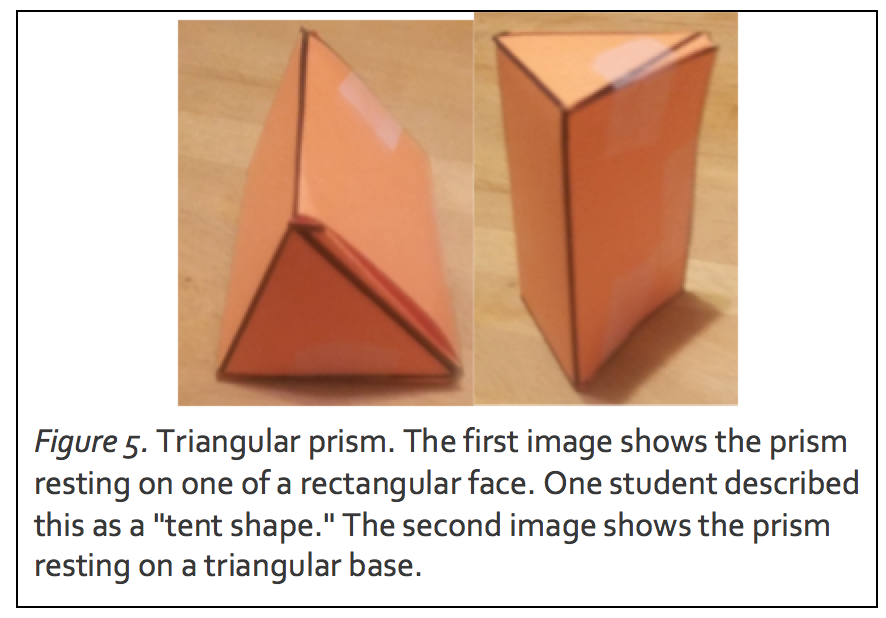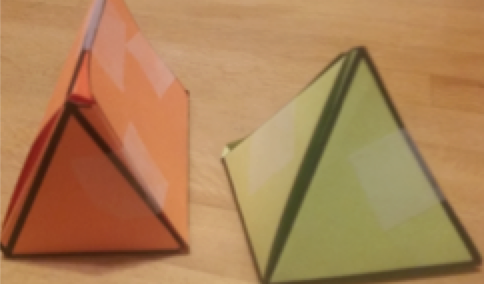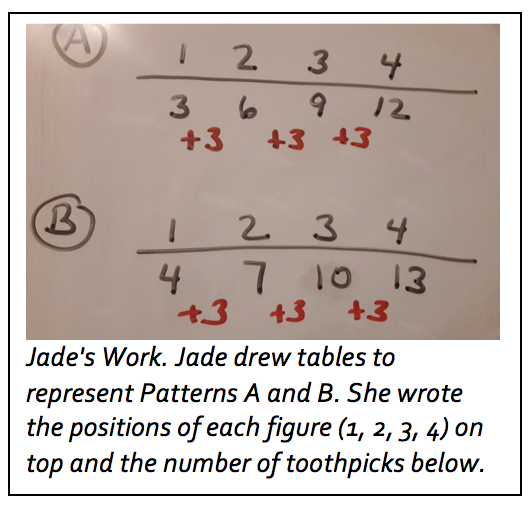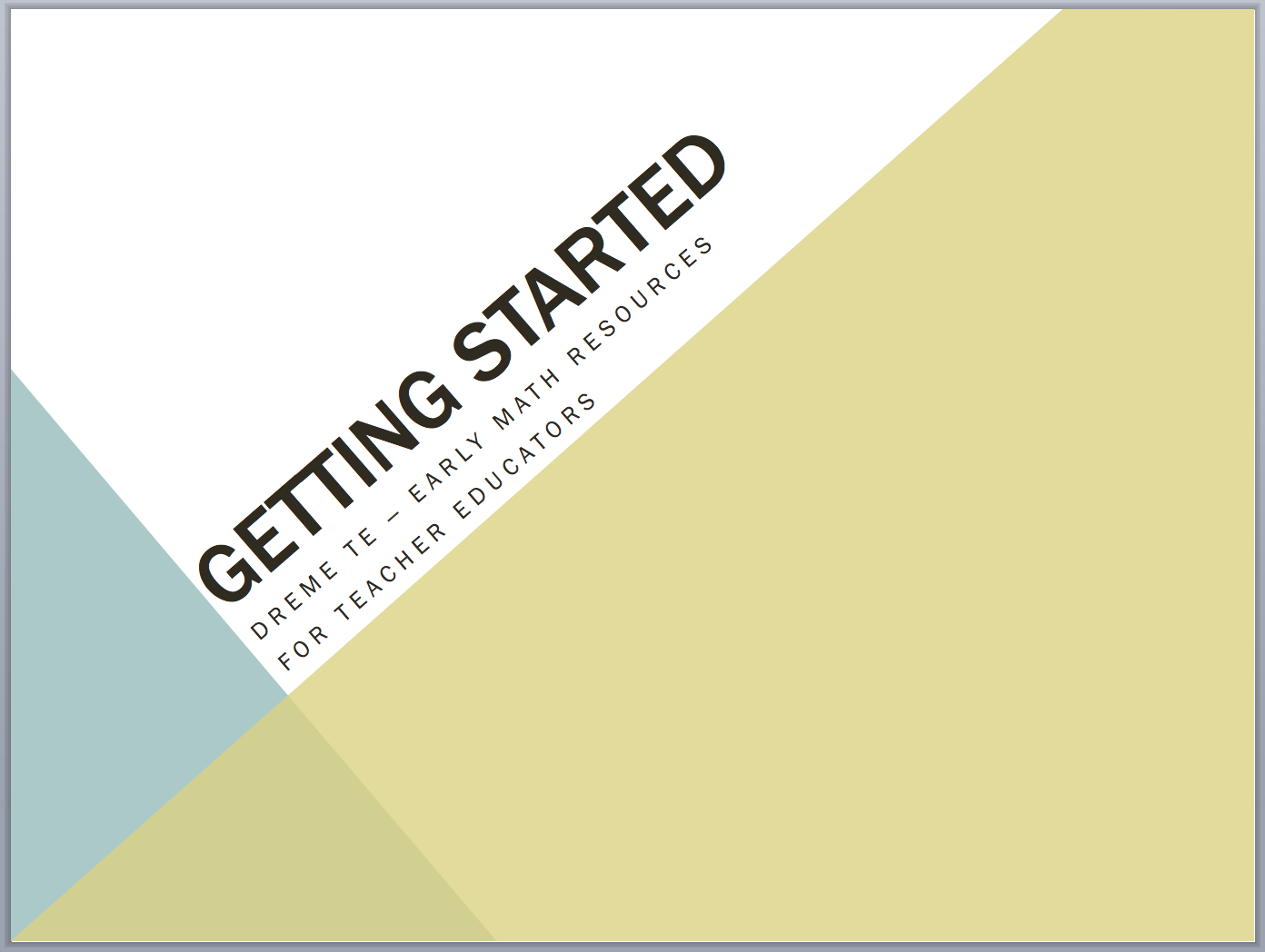Here is a detailed description of one round of the Shape Touch activity described in Teaching about Shape when we used it as part of a university course titled "The Development of Mathematical Thinking". Our participants were preservice teachers enrolled in a teacher certification program.
Activity for Teacher Educators
Participants Take Turns
In one group, the “describer” reached into the bag and felt a solid. In describing the properties, she said, "It has six faces. All of them feel like squares. It also has 1, 2, 3, 4, 5, 6, 7, 8 points. So, 8 vertices."
The “listeners” guessed that it was a cube. One listener chose to draw the cube and the other simply said, "It's a cube." The describer also guessed "cube" and then withdrew the solid from the bag, showing it was the pink cube.
When asked what the experience was like, the describer reflected, "By reaching into a bag filled with solid objects and not looking at the objects, I had to focus on the attributes of the three-dimensional solid I was feeling in order to describe it. For example, in order to describe the cube I felt, I had to describe the shape of its faces, the number of faces, and the number of vertices."
The bag was then passed to another participant, who became the describer. That participant reached into the bag and said, "I feel two faces that are circles. And I feel that the sides are curved." One listener knew it was a cylinder, and starting tracing the shape of a cylinder in the air. The other listener was watching and agreed, "Right! A cylinder." The describer lifted the shape to show the blue cylinder.
Participants' Reactions
Most of our participants responded positively to the activity. One participant reflected on the fact that they could not see the objects, saying, "I think that [the task] highlighted the need to use analysis when discriminating among shapes, rather than relying on appearances alone."
Another participant commented on the language component of the activity, writing that the task is “… a good example of how language and math complement each other, something many view as two totally separate subjects.”
For a non-native English speaker, the language can be an obstacle. One of our participants wrote, “I was challenged because I don't know how to express the terminology in English.”
Although the goal was to focus on attributes, several of the participants still focused on the names of the solids, even feeling that they did not succeed when they could not name the figure. One participant said her group was “able to use basic vocabulary to describe the shape; however, when the shapes got more advanced we did get confused with what constitutes the ‘base' of a shape.” Knowing which face is also a base is helpful, but that is more important when naming the shape than when describing its attributes.
Some of our participants seemed more concerned about what they did not already know than what they were actively learning. For example, in one group, the describer was holding a triangular prism. The describer wrote, “I initially told my group that the base was rectangular and the top was triangular. Everyone knew what shape it was but we could not think of the formal name for it.” Nevertheless, the listeners did identify the correct solid. One listener guessed that it was a “tent shape” and the other drew a triangular prism resting on one of its rectangular faces. The first image in Figure 5 shows how they envisioned the shape.

Despite the correct identification, members of the group were disappointed and did not feel successful. They were surprised when the course assistant rotated the prism to look like the second image in Figure 5, explaining that the bases of a triangular prism are triangles, not rectangles. One listener focused on what had been learned, writing that “we learned that bases of prisms must be parallel.” However, the other listener wrote, “My group specifically called one of the shapes 'tent shape', and even as I write this I still cannot remember the [proper] name of the shape!” The instructors again emphasized that the participants had successfully described and guessed the shape, and thus achieved the goal, which is not to learn the names of solids but rather to explore and learn about their attributes. The experience gave them some empathy for how children might feel badly if they encounter difficulty, and need to be reminded that the goal is to explore shapes, not necessarily to get the name right.
Most participants appreciated and enjoyed the activity. They agreed that a similar activity, in which two-dimensional shapes are placed in a bag and children need to guess them, could be useful for teaching the attributes of different shapes to young children.



